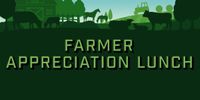Today is the day to remember the sacrifices made by Indigenous veterans in Canada.
Indigenous Veterans Day is celebrated this year on Nov. 8 in recognition of Indigenous people who have fought for the freedom of Canada through military service.
Veterans Affairs Canada (VAC) remembers the long and proud history of service by First Nations, Métis, and Inuit Canadians.
Exact statistics are not easily determined, says VAC, but there has been an impressive rate of Indigenous participation in Canada's military efforts throughout the country's history. It is believed around 12,000 Indigenous people, Métis, and Inuit have served in 20th-century military conflicts in uniform.
"These determined volunteers were often forced to overcome many challenges to serve in uniform, from learning a new language and adapting to cultural differences, to having to travel great distances from their remote communities just to enlist," reads the VAC website.
World War I (1914-1918)
More than 4,000 Indigenous people served in uniform during the First World War.
VAC calls their commitment a "remarkable response," with one in three able-bodied men volunteering to serve from some areas.
The Head of the Lake Band in B.C. was one such community. Every man from this area between the ages of 20 and 35 enlisted to serve.
Recruits joined for employment, adventure, and to preserve tradition -- many Indigenous ancestors fought with the British army in the War of 1812 and the South African War.
The Indigenous men who joined the military were skilled in patience, stealth, and marksmanship, VAC says. These traits were born from a life of hunting. As a result, many Indigenous soldiers became successful sharpshooters and reconnaissance scouts, meaning they used their stealth to secretly gather information on enemy positions.
Francis Pegahmagabow received the Military Medal with two bars for his efforts during the First World War. He served for nearly the entire length of the war.
Edith Anderson Monture joined the U.S. Medical Corps in 1917 after leaving her job as an elementary school nurse. At an American military hospital in France, she worked tirelessly to care for wounded and dying soldiers.
World War II (1939-1945)
The Second World War was no different in that many Indigenous people once again enlisted to fight for Canada. More than 100 had volunteered by march 1940 and more than 3,000 First Nations had served as soldiers by the war's end.
An unknown number of Métis, Inuit and other Indigenous also served in uniform.
Most served in the Canadian Army, with some becoming members of the Royal Canadian Navy and the Royal Canadian Air Force.
Like in the First World War, Indigenous soldiers served as snipers and scouts. Tommy Prince worked as a reconnaissance expert in the Devil's Brigade and posed as a local farmer to repair severed communications wires while in full view of enemy forces.
Indigenous soldiers also took on new roles. "Code talkers" translated sensitive radio messages into Cree so they could not be understood if enemies intercepted the message. Charles Checker Thompkins of Alberta was one such code talker.
After the message was received, another Cree-speaking code talker would decode the message by translating them back into English to deliver the message.
Some Indigenous service members received distinctions and decorations for bravery during the war.
The Distinguished Flying Cross was given to Willard Bolduc, an Ojibwa airman from Ontario for his actions as an air gunner during bombing raids over Europe. Mohawk soldier Huron Brant from Ontario earned the Military Medal for his courage during fighting in Sicily.
On the home front, Indigenous people donated many clothes and much food and money to worthy causes to support war efforts. They also allowed portions of their reserves to allow for the construction of new airports, rifle ranges, and defence installations.
"The special efforts of First Nations communities in Ontario, Manitoba and British Columbia were also recognized with the awarding of the British Empire Medal to acknowledge their great contributions," VAC says.
The Korean War (1950-1953)
Several hundred Indigenous people served during the Korean War, many of whom had seen action during the Second World War only five years prior. Their return to service meant an expansion of their previous roles.
Tommy Prince returned to battle to serve with the Princess Patricia's Canadian Light Infantry in Korea. He was second-in-command of a rifle platoon and led a group of men into enemy camp to capture two machine guns.
Prince also participated in the Battle of Kapyong in April 1951. His battalion was honoured for its distinguished service from the battle with the United States Presidential Unit Citation. The award was a rare honour for a non-American force to receive.
Noel Knockwood was a residential school survivor who enlisted with the Canadian Army to serve during the Korean War. He went on to become Nova Scotia's Sargent-at-Arms.
Present day
Indigenous men and women continue to proudly serve in Canadian military efforts today. They have been deployed all over the world, from work alongside NATO during the Cold War to providing peace support to and serving with the United Nations.
Indigenous military personnel today fill many roles, including serving as Canadian rangers. These army reservists are largely active in the North and remote stretches along Canada's east and west coasts.
The intimate knowledge of land held dear to Indigenous communities is a significant aid to Rangers, who must navigate and monitor the coastlines and difficult-to-reach areas.
Monuments such as the National Aboriginal Veterans Monument in Ottawa, Ontario, and the Francis Pegahmagabow monument in Parry Sound, Ontario remember the efforts of Indigenous soldiers today.
Originally published November 8, 2020

















